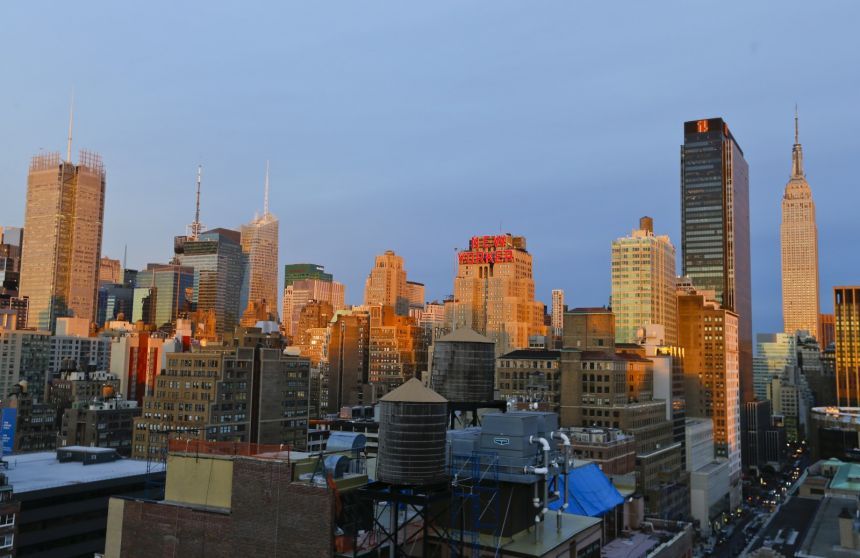On average, most Manhattan neighborhoods are in shadow for at least half of daylight hours, according to a dazzling new visualization of New York City’s shadows by the New York Times. Three different maps, encompassing all five boroughs, show how streets and parks are shaded throughout the year: in winter, summer and spring/fall.
In a New York City summer, the sun rises in the northeast and sets in the northwest; in the winter it rises in the southeast and sets in the southwest. As a result, buildings in the winter will cast shadows of vastly different angles and lengths than in the summer. Cedar Street between Williams and Pearl in the Financial District is one of the darkest streets in the city all year round, while Midtown’s street corners are unusually bright in the spring.
These effects aren’t purely aesthetic, though. The debate over sunlight in the city — and whether developers and architects need to take shadow into account when designing buildings — is an old one, and not fully resolved. As explored in this 2015 Next City feature, NYC was the first city in the country to try to regulate shadow in a citywide zoning code. The city’s first zoning ordinance, adopted in 1916, required that developers allow a minimum level of natural light and air to reach the street.
This was originally done via classic “wedding-cake” style skyscrapers whose upper floors backed away in tiers from the street, like the Empire State Building’s increasingly pointed crown. In the 1960s, the city changed to a policy that encouraged taller, narrower buildings with plazas at their base. But those designs were a huge disruption to the urban fabric, and often prevented architects from building the housing density the city so desperately needs.
So the debates over sunlight continue. The most recent battleground: Central Park. A slate of new, thin, super-tall skyscrapers on the park’s south side have sparked concerns that the bottom third of the park will lose its access to light.
Explore light and shadow in the city, block by block, here.
Jen Kinney is a freelance writer and documentary photographer. Her work has also appeared in Philadelphia Magazine, High Country News online, and the Anchorage Press. She is currently a student of radio production at the Salt Institute of Documentary Studies. See her work at jakinney.com.
Follow Jen .(JavaScript must be enabled to view this email address)
















